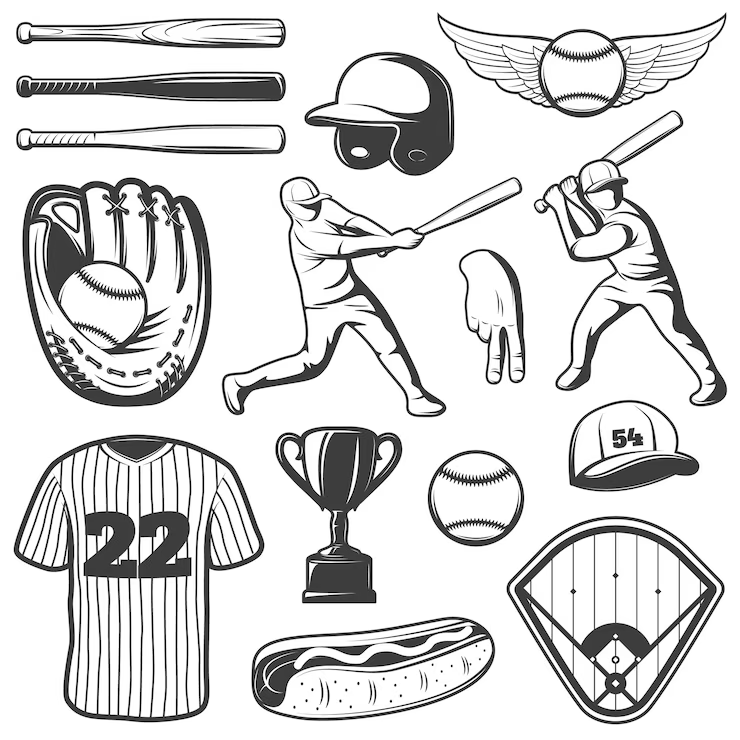Hat Couture: How Baseball Caps Redefined Fashion and Culture

In a world where fashion is more than just clothing—it’s a reflection of identity, expression, and culture—it’s fascinating to consider how a seemingly simple accessory like the baseball cap has risen to become a powerful symbol of these very ideals. The evolution of the baseball cap from a utilitarian sports garment to a ubiquitous fashion statement is a testament to its undeniable cultural impact.
In this blog post, we embark on a journey to explore the intricate relationship between baseball caps and the world of fashion. Beyond their origins on the baseball diamond, these caps have seamlessly woven themselves into the fabric of our society, making a profound mark that transcends sports. From street corners to catwalks, the influence of the baseball cap is undeniable, and its journey unveils a story that encapsulates the dynamic interplay of sport, style, and culture.
While the roots of the baseball cap can be traced back to the sports arena, its reach has far exceeded the boundaries of the playing field. Once a quintessential part of baseball uniforms, the baseball cap has now evolved into a ubiquitous accessory that finds its place in every corner of our lives. No longer confined to stadium bleachers, these caps have gained a firm foothold in the realm of fashion, reflecting the ever-evolving tastes and sensibilities of a diverse and dynamic society.
The journey of the baseball cap from functional headgear to a cultural emblem speaks volumes about our collective desire to blend comfort, utility, and style. What started as a piece of equipment designed to shield players’ eyes from the sun has seamlessly transitioned into a canvas for personal expression, cultural identity, and artistic interpretation.
It’s undeniable that the baseball cap has undergone a remarkable transformation, one that has elevated it from sports necessity to bona fide fashion staple. As we delve into the pages of history, we’ll witness the cap’s evolution from a humble sports uniform component to an emblem of rebellion, solidarity, and even luxury.
The world of fashion, ever the chameleon, has welcomed the baseball cap with open arms. It’s no longer merely a covering for the head; it’s a statement piece that communicates individuality, affiliation, and attitude. The popularity of baseball caps as a fashion accessory underscores the enduring impact of these seemingly unassuming hats on the way we present ourselves to the world.
Join us as we unravel the story of the baseball cap’s cultural metamorphosis, tracing its path from the diamond to the runway, and uncovering the myriad ways in which it has become a canvas for culture, self-expression, and the ever-evolving tapestry of fashion trends.
Through this exploration, we hope to shed light on the profound influence of the baseball cap on fashion and culture, inviting you to see this iconic accessory in a new light—one that highlights its ability to transcend boundaries, bridge worlds, and make a lasting impression on the fabric of society.
Stay with us as we embark on a journey that redefines how we perceive the baseball cap—one stitch, one story, and one cultural shift at a time.
A Historical Journey
The origins of the baseball cap are deeply rooted in the rich history of America’s favorite pastime: baseball. What began as a pragmatic solution to shield players’ eyes from the sun’s glare and enhance their visibility on the field has blossomed into a cultural icon that transcends its utilitarian beginnings.
In the mid-19th century, baseball was already capturing the hearts of enthusiasts across the United States. As players took to the field, they faced the challenge of squinting against the harsh sunlight, often leading to misjudgments and missed catches. This necessity birthed the idea of a brimmed head covering that could provide much-needed shade without obstructing their vision. Thus, the first iteration of the baseball cap was born—a functional piece designed to enhance performance rather than make a fashion statement.
The early baseball caps were rudimentary in design, typically constructed from wool and featuring a simple, short brim. Over time, as the sport gained popularity and players’ needs evolved, so did the cap’s design. The transition from wool to more lightweight and breathable materials marked a turning point in comfort and wearability.
As decades passed, baseball caps began to reflect the changing times. The caps’ brims became longer, offering enhanced sun protection, and the crown evolved to accommodate different head shapes. Beyond functionality, the cap’s design started to incorporate team logos, colors, and emblems, aligning it with the identity of the team and establishing a sense of unity among players.
While the early baseball caps were designed purely for the practical needs of athletes, it wasn’t long before these caps transcended the boundaries of the sports field. As baseball gained cultural significance, it inadvertently paved the way for the cap to become a cultural emblem beyond the diamond. The cap’s journey from sports uniform to fashion accessory was marked by its gradual integration into everyday life.
In the modern era, the baseball cap has undergone a metamorphosis that marries form and function in unprecedented ways. The cap’s design now seamlessly combines elements of comfort, style, and team pride. The introduction of adjustable straps, snapbacks, and fitted caps revolutionized the cap’s fit, making it more accessible and customizable for wearers of all ages.
Moreover, the fashion industry’s fascination with nostalgia has fueled a resurgence of vintage-style caps, evoking a sense of retro charm. Today’s baseball caps are not limited to the realm of sports; they have transcended into streetwear, high fashion, and even luxury collections, further solidifying their status as a cultural phenomenon.
As we delve deeper into the historical journey of the baseball cap, it becomes evident that this seemingly humble accessory has come a long way—from its early days as a practical solution for ballplayers to its present status as a versatile symbol of culture and style. The evolution of the baseball cap serves as a testament to its adaptability, resilience, and enduring relevance in an ever-changing fashion landscape.
From Sports to Streetwear
The journey of the baseball cap from the realm of sports uniforms to a coveted emblem of streetwear culture is a testament to its remarkable adaptability and the fluid nature of fashion trends. This transition underscores the cap’s unique ability to traverse diverse subcultures and bridge the gap between the athletic and fashion worlds.
The 1980s marked a pivotal turning point in the relationship between sports attire and streetwear. It was during this era that the lines between sports fashion and everyday wear began to blur. The baseball cap, once exclusively associated with the diamond, found a new home on the streets, becoming a symbol of casual coolness and urban authenticity.
One of the most significant factors contributing to the baseball cap’s metamorphosis into a streetwear staple was its adoption by hip-hop artists. In the late 1970s and early 1980s, hip-hop culture was taking shape in urban neighborhoods, and artists like Run-D.M.C. played a pivotal role in popularizing the cap as an integral element of their fashion repertoire.
The iconic image of Run-D.M.C. members donning Adidas tracksuits and boldly displaying their New York Yankees caps turned the baseball cap into a symbol of urban identity and defiance. This fusion of sportswear and streetwear not only resonated with hip-hop enthusiasts but also sparked a trend that would have a lasting impact on fashion culture.
As the influence of hip-hop extended beyond its cultural roots, celebrities from various realms began embracing the baseball cap as a fashionable accessory. From actors to musicians, the cap’s versatility made it an essential component of individual style. Celebrities like Tupac Shakur, Will Smith, and Gwen Stefani demonstrated the cap’s ability to transcend gender, genre, and geographical boundaries.
Furthermore, the cap became a canvas for personal expression and affiliation. Fans donned caps adorned with team logos and symbols, showcasing their loyalty and identity. This symbiotic relationship between celebrities, fans, and the baseball cap further solidified its status as a cultural icon that was here to stay.
The influence of the baseball cap continued to extend its reach beyond the streets and into high fashion and luxury realms. Fashion designers recognized the cap’s unique blend of sportiness and street cred, leading to collaborations that pushed the boundaries of design and creativity. The cap’s incorporation into runway shows and luxury collections further emphasized its adaptability and relevance.
The journey of the baseball cap from sports to streetwear is a reminder of fashion’s ability to challenge conventions, blur boundaries, and capture the zeitgeist of a generation. The cap’s evolution from the ballpark to city sidewalks represents a cultural shift that reflects society’s changing values, aspirations, and desires.
As we navigate the intricate web of influences that propelled the baseball cap from the sidelines to the forefront of fashion culture, we come to appreciate the interconnectedness of sports, music, celebrity, and individual expression. The baseball cap’s transformation into a streetwear staple is not just a story of style evolution—it’s a testament to the cap’s indomitable spirit, embracing change while retaining its core essence.
Cultural Icons and Their Impact
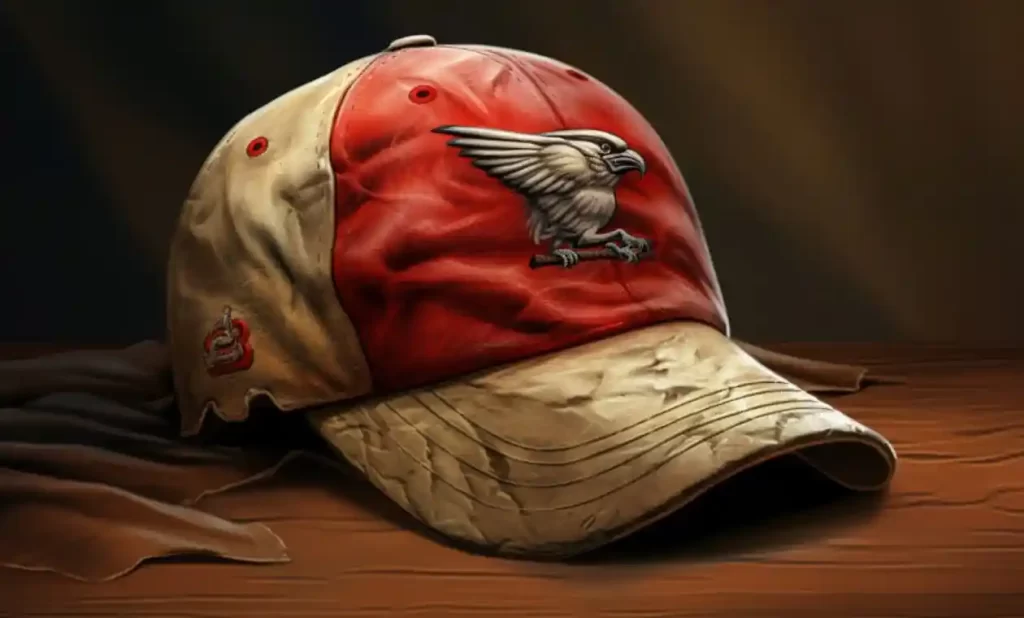
The trajectory of the baseball cap’s journey from functional sports gear to a fashion statement is intertwined with the influence of cultural icons who recognized its potential to redefine personal style and communicate powerful messages. These figures, ranging from musicians to athletes and actors, used the baseball cap as a canvas to express their individuality, spark trends, and connect with their fanbases in unprecedented ways.
The emergence of hip-hop culture in the late 20th century introduced a fresh avenue for the baseball cap to take center stage. Hip-hop artists, with their lyrical prowess and distinctive fashion sense, propelled the cap into the spotlight as a symbol of authenticity and street credibility.
Artists like LL Cool J, whose signature Kangol cap became an emblem of his swagger, and Missy Elliott, whose oversized caps became synonymous with her boundary-pushing style, played a pivotal role in redefining how the cap could be worn. The cap, adorned with team logos, turned from mere headwear into a badge of identity—one that transcended sports allegiance and embraced urban culture.
While athletes initially sported the cap on the field for practical reasons, they soon realized its potential to amplify their personal brand beyond the game. Athletes like Michael Jordan, with his iconic Chicago Bulls cap, and Ken Griffey Jr., who became synonymous with his backwards-worn cap, demonstrated that the cap was not only about sports but also about making a statement and showcasing personal flair.
These athletes blurred the lines between the sports arena and the fashion world, transforming the cap into a versatile accessory that could seamlessly transition from game day to street style. By embracing the cap as a signature element of their off-duty looks, these sports legends elevated its status to one of cultural significance.
The influence of celebrities on the popularity of the baseball cap is undeniable. As celebrities incorporated the cap into their everyday ensembles, they unwittingly sparked trends that resonated with their fanbases. A-listers like Rihanna, who effortlessly combined baseball caps with high fashion pieces, and David Beckham, who embraced the cap as a casual yet chic accessory, showcased its versatility and adaptability across different styles.
In a world where fans seek to emulate their favorite celebrities, the cap became a unifying factor that transcended social strata. The cap’s democratization allowed fans to share a piece of their idols’ style and foster a sense of connection and identification.
The baseball cap’s evolution into a symbol of individualism and empowerment cannot be understated. Cultural icons leveraged the cap’s inherent casualness to challenge conventions and break down barriers. The cap became a visual language through which artists and athletes could communicate messages of rebellion, unity, and self-expression.
As we look back at the cultural icons who paved the way for the baseball cap’s ascent in the realm of fashion, we realize that their impact extends beyond style. Through their choices, they demonstrated that an accessory can be a potent tool for self-discovery, empowerment, and cultural commentary—a canvas that reflects the spirit of an era and connects individuals through shared stories and symbols.
Symbolism and Self-Expression
In a world where clothing is more than just fabric, the baseball cap stands as a beacon of symbolism and self-expression. Beyond its functional purpose, the cap has evolved into a canvas through which wearers convey their identity, affiliations, and values. Its transformation from a sportswear staple to a cultural emblem is a testament to its capacity to encapsulate personal narratives and transcend societal boundaries.
The act of donning a baseball cap transcends mere fashion; it’s a conscious choice that speaks volumes about the wearer’s identity. From representing hometown pride to reflecting cultural heritage, the cap becomes a visual marker of where one comes from, who they are, and what they stand for.
For instance, wearing a cap adorned with the logo of a favorite sports team becomes an assertion of loyalty and affiliation. It signals not only support for the team’s performance but also a shared sense of community among fans. Similarly, caps bearing the insignia of cities, states, or countries carry a narrative of geographic identity—a nod to the places that have shaped the wearers’ stories.
The baseball cap’s versatility as a communication tool goes beyond geography. It often serves as a platform for expressing beliefs, cultural affiliations, and messages that resonate with the wearer. Caps adorned with slogans, logos, or symbols become silent messengers of causes, whether it’s social justice, environmental activism, or support for marginalized communities.
For instance, a cap displaying an equality emblem speaks to the wearer’s commitment to social progress, while caps adorned with symbols from different cultures signal solidarity and a desire for cultural exchange. The cap becomes a conversation starter, inviting others to engage in dialogue about the wearer’s values and passions.
The baseball cap’s ability to subvert norms and expectations is another facet of its symbolic power. In a world of dress codes and conventions, the cap offers wearers an avenue to challenge established norms and embrace nonconformity. Wearing a cap in unconventional ways—backwards, sideways, or at a unique angle—becomes a declaration of individualism and a rejection of prescribed fashion rules.
The cap’s history in hip-hop culture, where unconventional styling was embraced as an assertion of authenticity, further reinforces its role as a symbol of rebellion. The act of wearing a cap with audacity becomes a way of redefining what is deemed acceptable and celebrating the beauty of embracing one’s unique style.
As we explore the symbolism of the baseball cap, we are reminded that each cap tells a story—a narrative of identity, affiliation, and self-expression. From local communities to global stages, the cap transcends linguistic barriers and cultural differences. It’s a canvas that invites wearers to share their stories with the world, a declaration of who they are and the values they hold dear.
In a world that yearns for connection and understanding, the baseball cap bridges gaps and fosters conversations. It’s a reminder that fashion is not just about what we wear on our bodies; it’s a medium through which we share our stories, express our individuality, and contribute to the rich tapestry of human experience.
Collaborations and Designer Caps
The intersection of sports and fashion has given rise to a fascinating phenomenon: collaborations between revered sports teams and esteemed fashion brands. This partnership has birthed a new breed of baseball caps that transcend the ordinary, fusing the worlds of athletics and high fashion in captivating and unexpected ways. The allure of these limited-edition designer caps lies not only in their exclusivity but also in their ability to bridge diverse fanbases and unite fashion enthusiasts and sports aficionados under a shared sartorial experience.
The concept of blending sports teams’ imagery with the aesthetics of fashion brands was a revolutionary idea that challenged traditional fashion norms. The resulting designer caps offer a fresh take on sports attire, elevating it to the realm of luxury and creating a fusion that caters to both sports enthusiasts and fashion connoisseurs.
These collaborations introduce a dynamic synergy—sports teams lend their legacy, history, and loyal fanbases, while fashion brands contribute their innovative designs, materials, and elevated aesthetics. The result is a range of caps that combine the heritage of sports with the creativity of high fashion, resulting in pieces that pay homage to tradition while pushing the boundaries of contemporary style.
Several collaborations between sports teams and fashion houses have garnered widespread attention, becoming cultural phenomena in their own right. One such example is the collaboration between the New York Yankees and luxury brand Gucci. The partnership yielded a collection of caps that seamlessly incorporated the Yankees’ iconic logo with Gucci’s signature patterns, creating a harmonious blend of classic and modern aesthetics.
Similarly, collaborations between streetwear brands and sports franchises, such as Supreme’s partnership with the NBA, have captured the essence of urban culture and sports fanaticism. The limited availability of these designer caps adds an air of exclusivity, making them coveted collector’s items that bridge the gap between worlds.
One of the driving forces behind the appeal of designer caps born from collaborations is their exclusivity. Limited-edition releases create a sense of urgency and desire among consumers, prompting them to seize the opportunity to own a unique piece that embodies the marriage of sports heritage and high fashion innovation.
The allure of these caps lies not only in their design but also in their ability to encapsulate a moment in time. Each cap becomes a tangible representation of a collaboration—a snapshot of shared creativity and vision between seemingly disparate worlds. Collectors and enthusiasts are drawn to these pieces as they become a part of a broader cultural narrative, representing the evolution of style, identity, and the blurring of boundaries.
The impact of collaborations between sports teams and fashion brands goes beyond aesthetics. These designer caps serve as a unifying force, bridging the gap between different fanbases and demographics. Fashion enthusiasts and sports aficionados find common ground in their appreciation for these pieces, demonstrating that style can transcend preconceived notions and create connections that extend beyond the realms of fashion and sports.
As we witness the rise of collaborations and designer caps, we are reminded of the power of innovation, creativity, and collaboration. These caps celebrate the interplay of heritage and modernity, tradition and innovation, and reflect the dynamic nature of fashion as it continues to evolve and redefine its boundaries.
Caps Beyond Gender and Age
In a world of ever-evolving fashion norms, the baseball cap stands out as an accessory that defies traditional gender and age boundaries. Its universal appeal transcends demographics, making it a versatile and inclusive piece that resonates with people of all ages and genders. The cap’s journey from functional headgear to a symbol of self-expression has paved the way for its embrace by diverse communities, highlighting its ability to unite, empower, and redefine societal perceptions.
The baseball cap’s universal appeal is perhaps most evident in its disregard for gender stereotypes. Once perceived as primarily masculine attire, the cap has dismantled this notion, evolving into a unisex emblem that challenges preconceived ideas of what is considered “appropriate” for different genders.
Women around the world have embraced the cap as an accessory that complements their diverse styles. From pairing it with casual outfits for an effortlessly cool look to juxtaposing it with elegant ensembles for a touch of contrast, the cap adds an element of attitude and personality that transcends gender boundaries. This newfound freedom to express individuality beyond restrictive gender norms has transformed the cap into an empowering symbol of inclusivity.
The baseball cap’s journey through generations is a testament to its ageless appeal. It effortlessly spans age categories, offering something for everyone—from youngsters seeking a youthful vibe to older individuals seeking comfort and casual sophistication.
For the youth, the cap represents a sense of rebellion and a celebration of pop culture. It’s a canvas to showcase fandoms, music preferences, and youthful energy. Conversely, for older generations, the cap offers an opportunity to embrace comfort and effortless style. Whether worn to protect against the sun or to punctuate a laid-back look, the cap’s ability to resonate with diverse age groups speaks to its timeless charm.
The cap’s universality extends beyond gender and age to encompass cultural adaptability. Its appeal reaches far and wide, transcending geographical boundaries and cultural contexts. From bustling metropolises to remote villages, the cap’s ability to find its place in diverse settings is a testament to its cultural fluidity.
In urban environments, the cap’s streetwear aesthetics find resonance among fashion-forward individuals seeking to make a statement. In rural communities, it becomes a practical accessory that shields against the elements. The cap’s ability to blend seamlessly with various cultural contexts demonstrates its role as a universal accessory that has the power to bridge divides and create connections.
As we reflect on the universal appeal of the baseball cap, we recognize its significance as a symbol of unity and empowerment. By transcending gender and age boundaries, the cap becomes an instrument of inclusion, reminding us that fashion is not limited by societal constraints. It serves as a reminder that style is a form of self-expression that knows no limits—a powerful narrative that celebrates individuality and brings diverse communities together under a shared love for an iconic accessory.
Modern Interpretations
In an era defined by constant innovation and the ceaseless evolution of fashion, the baseball cap remains a dynamic canvas for creativity. As designers and wearers alike continue to push boundaries, the cap has undergone a modern renaissance, showcasing a range of interpretations that redefine its place in the world of style. From customization trends that celebrate individuality to the integration of unique materials and cutting-edge designs, the modern baseball cap has firmly established itself as a symbol of adaptability and innovation.
One of the most remarkable modern interpretations of the baseball cap lies in the realm of customization. Today’s wearers are no longer content with off-the-rack options; they seek accessories that reflect their unique personality and experiences. Customization trends have paved the way for caps that are tailored to individual preferences, allowing wearers to choose colors, patterns, and even embroidered designs that resonate with their personal stories.
The rise of embroidery, patches, and pins has turned the cap into a dynamic canvas for self-expression. Whether adorned with personal mementos, slogans, or artistic designs, these customizations transform the cap into a wearable memory board—a tangible representation of the wearer’s journey, values, and passions.
As fashion constantly seeks to push boundaries, the baseball cap has been reimagined through innovative material choices. Caps constructed from unconventional materials like recycled plastics, sustainable fabrics, and technical textiles not only reflect a growing awareness of environmental concerns but also introduce a new level of functionality.
Advanced moisture-wicking fabrics keep wearers comfortable in various climates, while sustainable materials contribute to a greener fashion industry. The integration of technical fabrics allows for enhanced breathability and UV protection, making the cap an accessory that marries fashion with performance.
The modern baseball cap has also seen an influx of avant-garde designs that challenge conventions and redefine what a cap can be. From deconstructed styles that play with asymmetry and unexpected angles to oversized caps that make a bold statement, designers have embraced experimentation and creativity.
Caps with detachable brims, adjustable layers, and convertible designs add an element of surprise, transforming the cap from a simple accessory into an interactive piece of wearable art. These avant-garde interpretations cater to those seeking to make a statement, encouraging wearers to think outside the box and embrace the cap as a canvas for boundary-pushing expression.
As we observe the modern interpretations of the baseball cap, we witness a dynamic synthesis of tradition and innovation. Customization trends bridge the gap between heritage and individuality, reflecting the cap’s capacity to evolve without losing sight of its origins. Innovative materials and avant-garde designs underscore the cap’s versatility and adaptability, positioning it as an accessory that remains relevant in an ever-changing fashion landscape.
The modern baseball cap is a nod to the past, a celebration of the present, and a glimpse into the future. It’s a testament to the enduring power of an iconic accessory that continues to shape-shift, surprise, and captivate, making its mark as a symbol of creativity, adaptability, and limitless possibilities.
Our Recommended Caps
’47 MLB Natural Clean Up Adjustable Hat Cap, Adult One Size


Experience comfort and style with the ’47 MLB Natural Clean Up Adjustable Hat Cap. Made from 100% cotton twill, this officially licensed cap features front raised embroidery. The self-fabric strap closure ensures an adjustable fit that’s suitable for all. Whether you’re at the ballpark or out and about, showcase your love for Major League Baseball in this classic cap.
NPJY Baseball Cap Golf Dad Hat Adjustable Original Classic Low Profile Cotton Hat
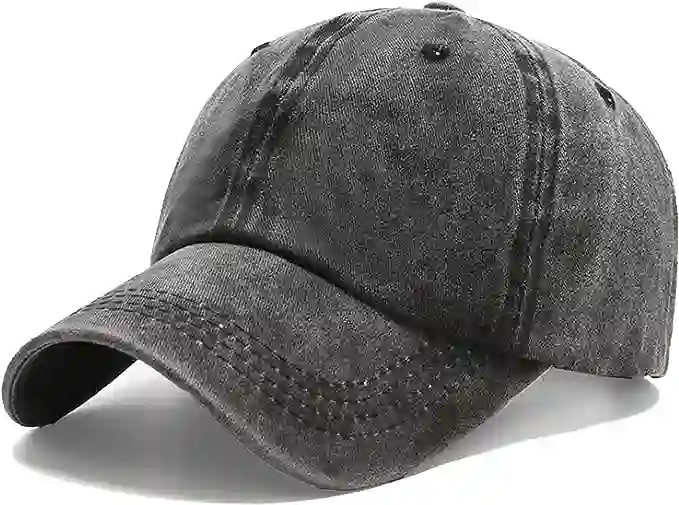

Elevate your everyday look with the NPJY Baseball Cap Golf Dad Hat. Crafted from soft and lightweight washed cotton fabric, this vintage-style cap ensures comfort and durability. The adjustable metal buckle back closure guarantees a great fit for most head sizes. With a low profile unconstructed design, this cap is perfect for various occasions and outfits. Show off your style effortlessly with its classic charm.
Outdoor Cap Mountain Dad Hat – Unstructured Soft Cotton Cap
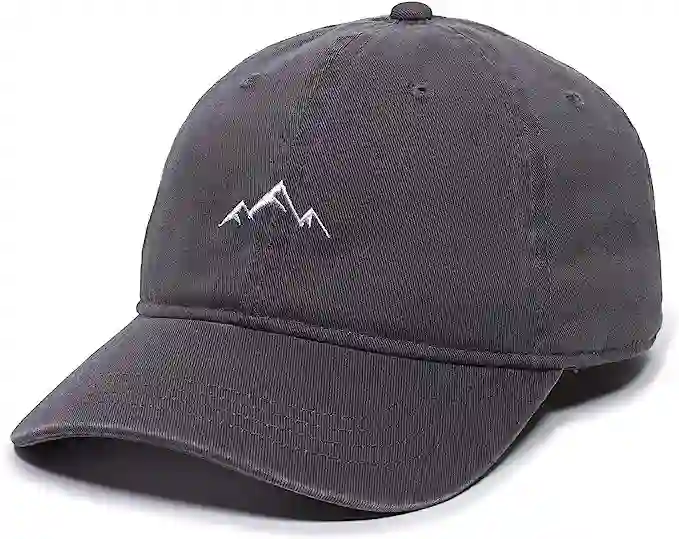

Embrace the outdoors with the Outdoor Cap Mountain Dad Hat. This unstructured soft cotton cap is designed for comfort and versatility. With a sporty look that’s perfect for various activities, it’s an ideal companion for your outdoor adventures. The adjustable buckle closure ensures a secure fit, making this cap a must-have addition to your collection.
Carhartt Men’s Canvas Mesh-Back Cap


Experience durability and style with the Carhartt Men’s Canvas Mesh-Back Cap. Made from 100% cotton, this structured cap features a vintage wash and pre-curved visor. The mesh back provides breathability, while the moisture-wicking sweatband keeps you comfortable. With its adjustable fit and Carhartt logo patch, this cap is perfect for both work and play.
Flexfit Cotton Twill Fitted Cap
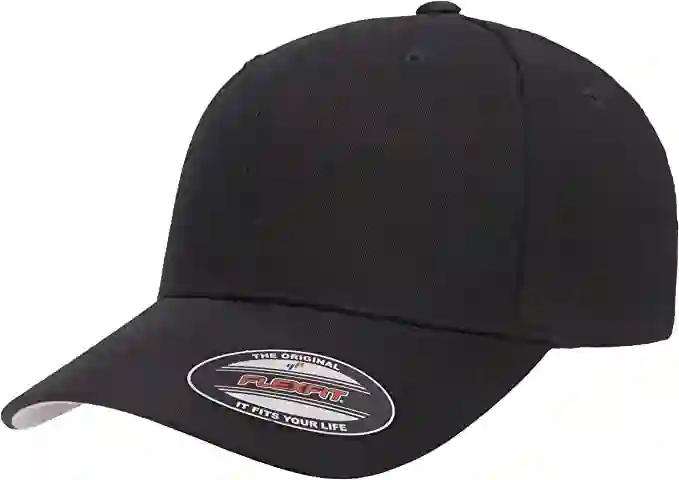

Achieve a sleek and fitted look with the Flexfit Cotton Twill Fitted Cap. Crafted from 98% cotton and 2% spandex, this cap offers comfort and flexibility. With its fitted design, it provides a tailored appearance that complements various outfits. Whether you’re running errands or hanging out, this cap is a versatile addition to your accessory collection.
In Crux
The journey of the baseball cap in the world of fashion is a testament to its remarkable ability to transcend its humble origins and emerge as a global symbol of style, self-expression, and cultural connection. From its inception as a pragmatic solution to shield players from the sun’s glare on the baseball diamond, to its current status as a cherished fashion accessory, the baseball cap has undergone a transformation that mirrors the dynamic evolution of fashion and culture.
What began as a functional piece of sports equipment has evolved into a canvas that weaves together stories of identity, rebellion, and unity. The baseball cap’s transition from sports uniform to streetwear icon signifies its journey from the periphery to the forefront of fashion culture. It’s no longer just an accessory; it’s a language through which individuals communicate their allegiances, beliefs, and passions.
The cap’s role in pop culture and its influence on music, sports, and celebrity endorsements have elevated it to an emblem that resonates across generations and demographics. Through collaborations, customization trends, and avant-garde designs, the cap has embraced innovation while preserving its essence—a testament to its timelessness.
The enduring appeal of the baseball cap lies in its adaptability. It possesses the unique ability to navigate through shifting cultural tides, remaining relevant in the face of changing fashion landscapes. The cap’s journey is a reflection of our collective yearning for self-expression, unity, and the celebration of individuality.
As the fashion world continues to evolve, the baseball cap stands as a symbol of consistency, bridging gaps between traditions and innovations. Its transition from sports to streetwear, from functional to fashionable, illustrates the cap’s role as a cultural chameleon—an accessory that effortlessly traverses the realms of style, identity, and symbolism.
Suggested Review Products
- From the Diamond to the Runway: The Evolution of Baseball Caps
- Master Your Swing: The Ultimate Baseball Bat Guide
FAQs about Fashion and Culture of Baseball Caps
[sp_easyaccordion id=”260″]

Meet Daniel Anderson, the heart and soul behind Baseball Pro Picks. At 49, Daniel’s life has revolved around baseball, a passion that’s as strong today as it was when he first fell in love with the game. Living in the USA, Daniel has dedicated countless hours to watching, analyzing, and understanding every pitch, hit, and home run, making almost no game missed. His deep-rooted love for the sport is matched only by his commitment to sharing insightful, expert analysis with fellow baseball enthusiasts. With decades of experience and a keen eye for the game’s nuances, Daniel brings a unique perspective that enriches Baseball Pro Picks. Trust Daniel to guide you through the intricacies of baseball with the authority and trustworthiness of a true aficionado.












